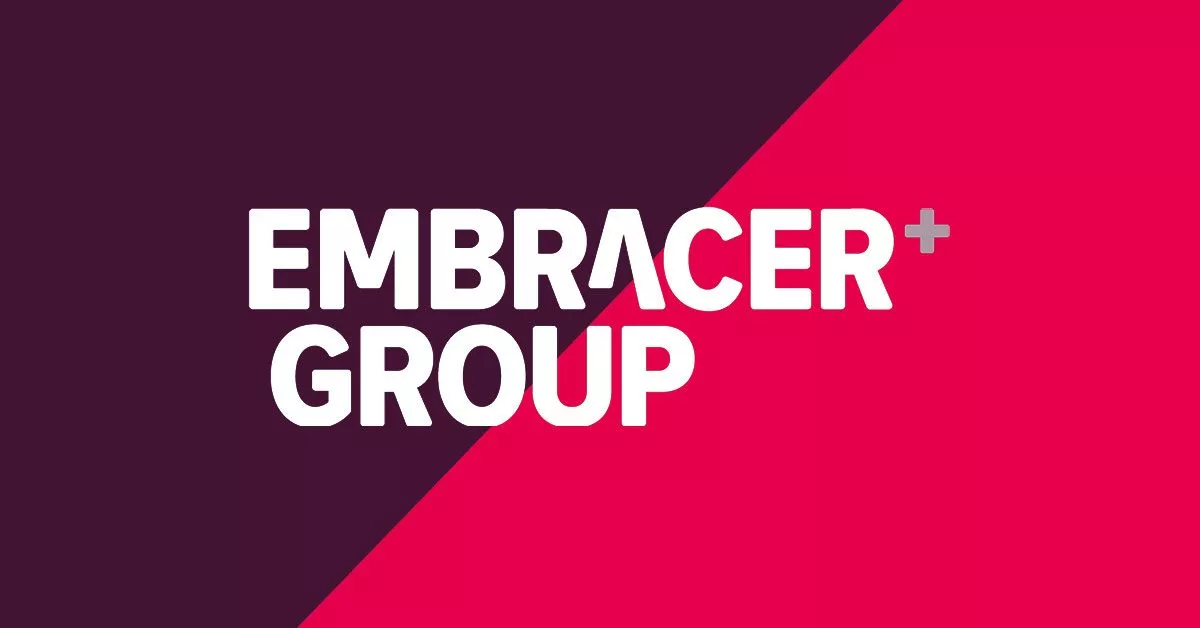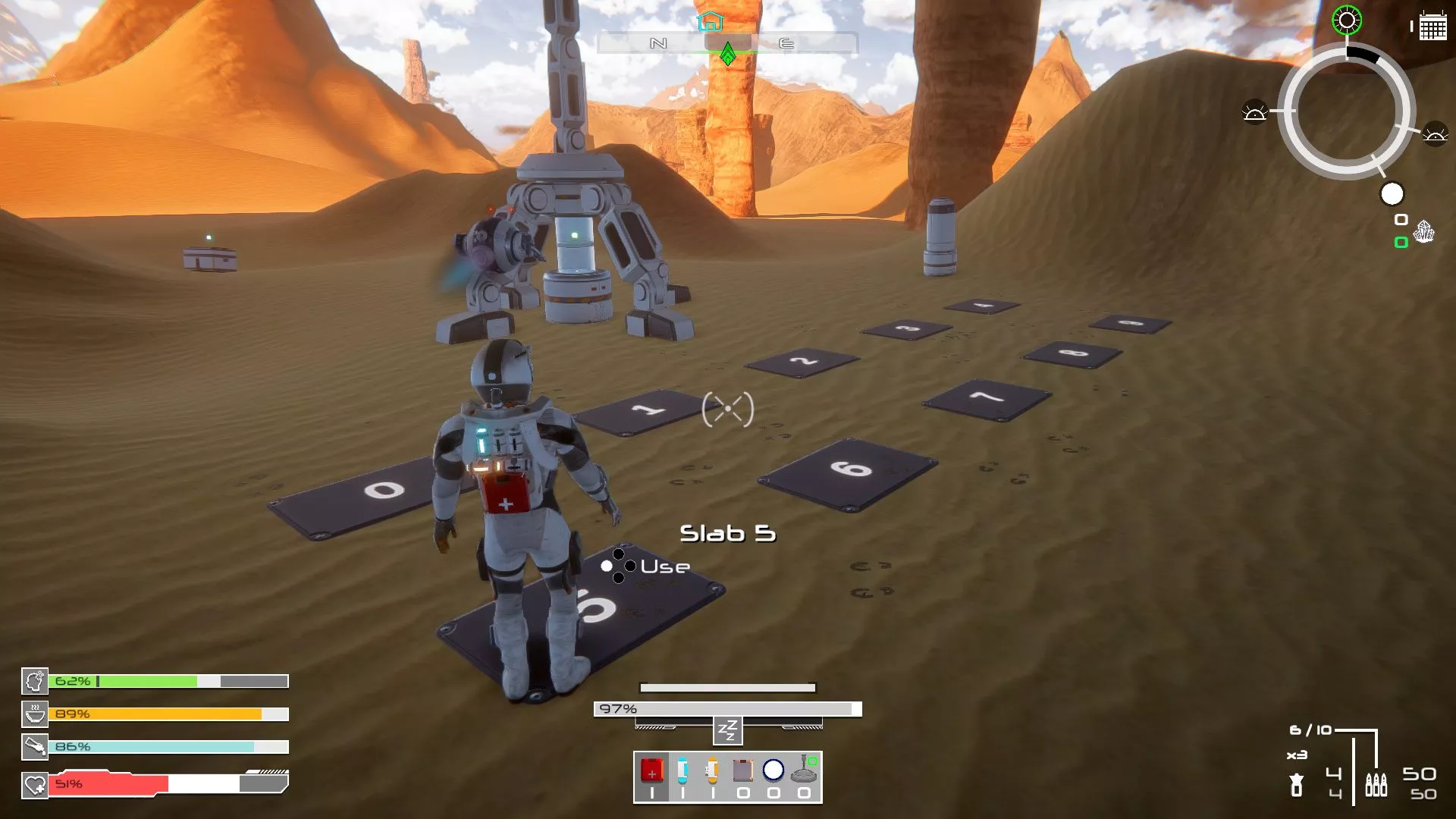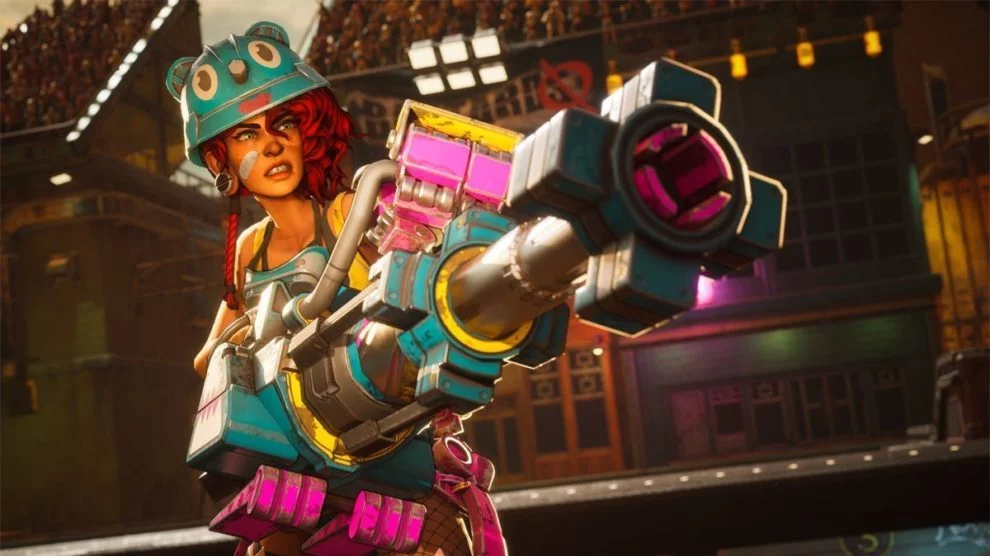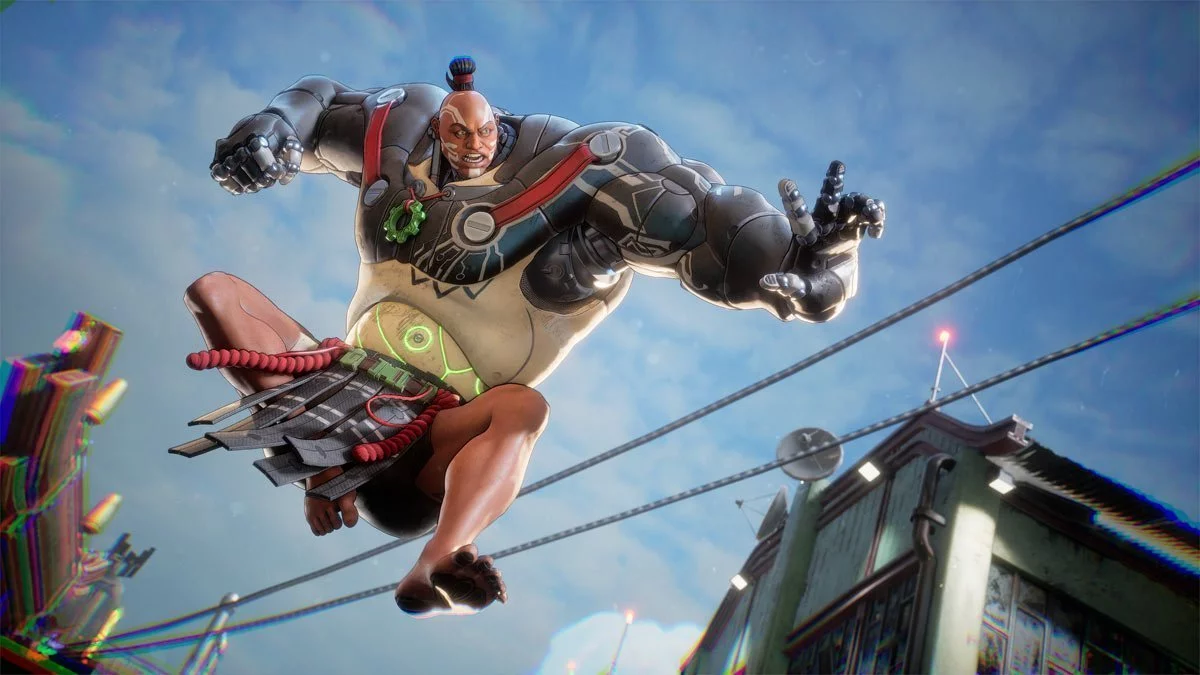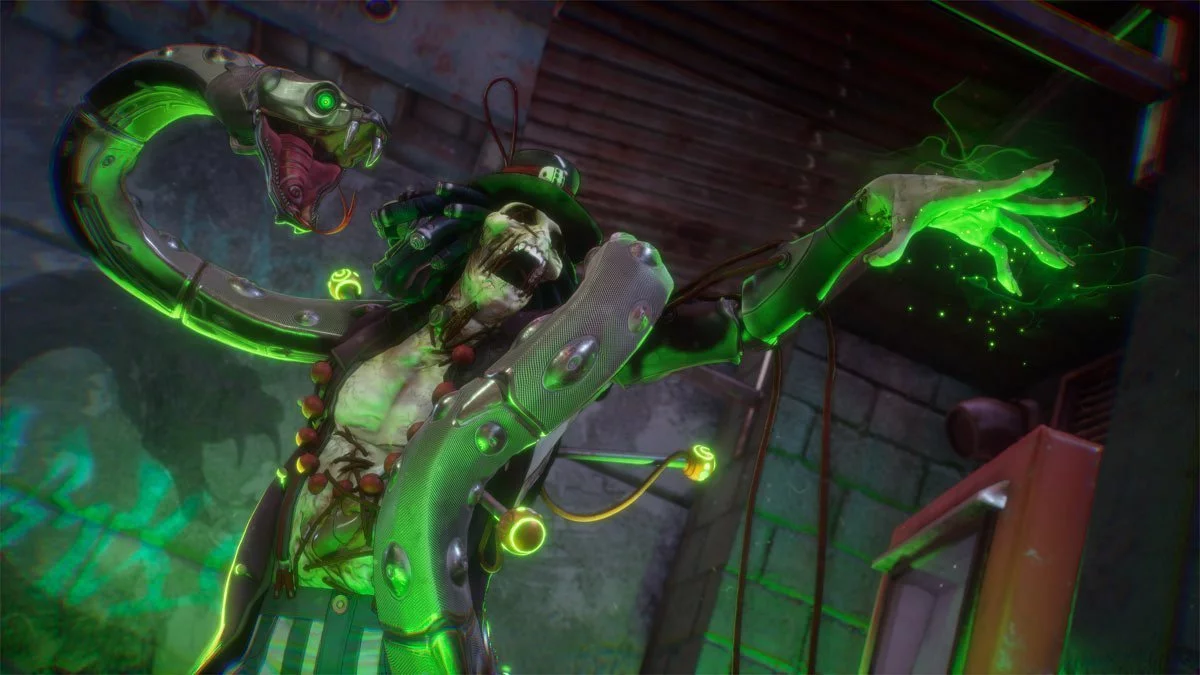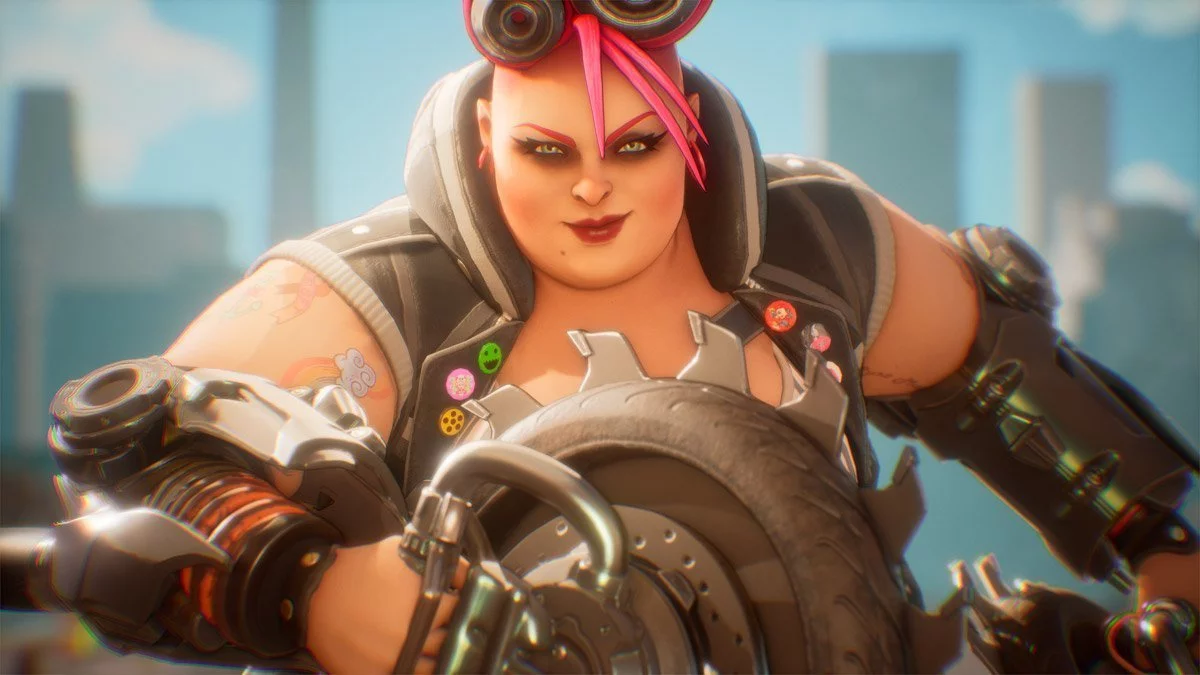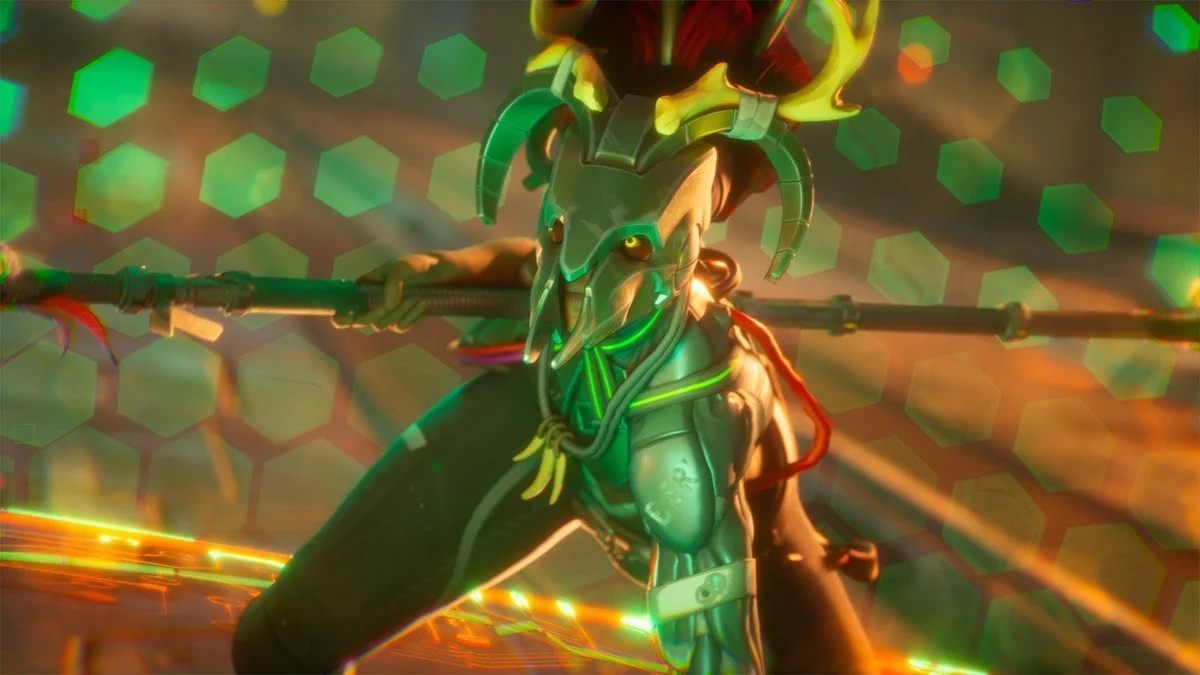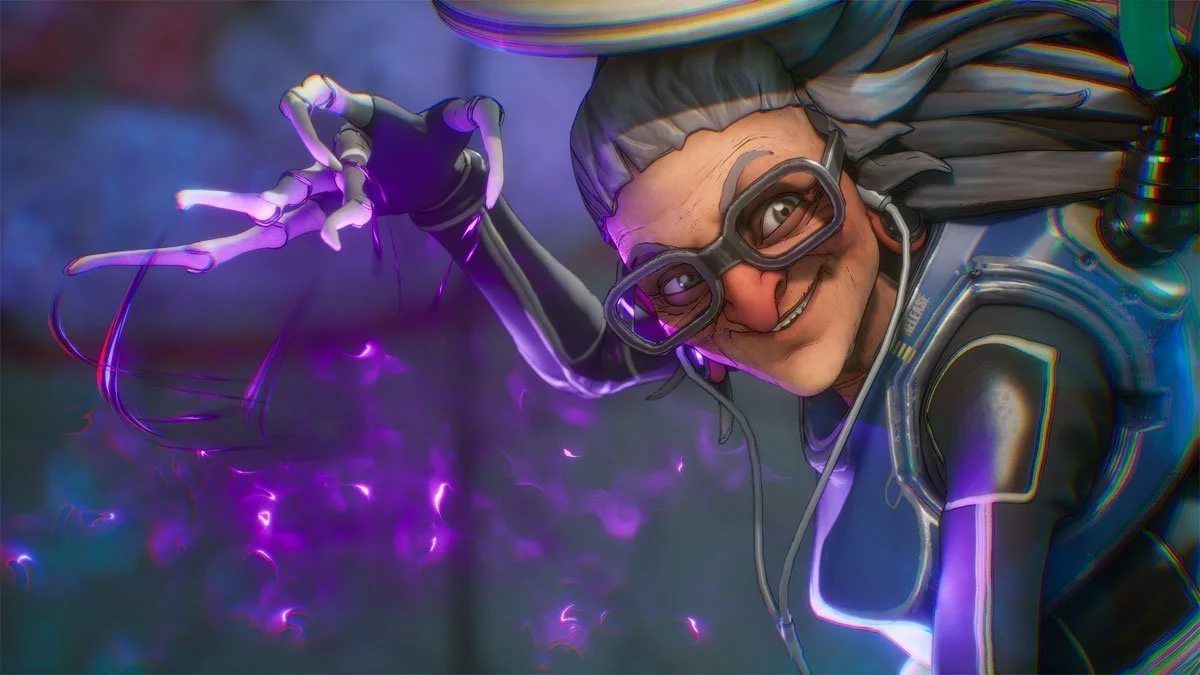Bleeding Edge was one of the biggest announcements during the first-party packed Xbox E3 2019 Showcase, but it’s been in development for three years, well before Ninja Theory joined Xbox Game Studios.
We went hands-on with the 4v4 colourful shooter at E3 and then sat down to chat with Creative Director Rahni Tucker, originally from Australia, who had the honour of being the first person on-stage during the Xbox conference.
Stevivor: We had a chance to play after the showcase, but only got to try one character. They’re very important to what you’re doing with Bleeding Edge, so how many are we looking at and what modes will they feature in?
Rahni Tucker, Creative Director on Bleeding Edge: We’ll ship 10 characters in the Technical Alpha and then we’ll be adding more as we go along. In terms of game modes, you played objective control in the city streets map with the train going through. So there’s another game mode called Power Cells.
That’s split into two phases as kind of a collection and delivery. In the collection phase, power cells spawn around the map and your team goes around and collects them. And then the delivery phase, one, two or three delivery zones activate and then you hand them in and score points. If you get killed while you’re carrying cells, you drop them and then the other team can pick them up, or your buddies can pick them up if they’re close enough. So yeah, two game modes, and then there are three map locations. Each map location can support both game modes.
So there’s the one you played in the streets with the train and there’s a sewers, aqueducts style map where there’s an objective in the middle. Then the other two objectives are going around the outside in this kind of water channel. As the objectives move around, they pass through these electric fences that you can use to your advantage.
Then there’s a rooftops map, so in that one you can use jump pads to bounce across from one objective, to quickly get from objective C to A, and the objectives have a furnace underneath them that you can turn on by hitting a gong. So you can use them as part of your strategy, when attacking a point, especially if the whole enemy team’s on there. So three maps across the two game modes. That’s what we started doing for Alpha and then will be adding more as we go along.
The other thing you didn’t really get to see [in the Xbox Showcase] is the mods system.
Stevivor: Yeah, right. We didn’t have much time to play around with the characters, but I assume mods are the main unlock?
Rahni Tucker: So each character comes equipped with three default mods. That’s kind of what we feel represents a nice balanced build for a new player, for that character, and that’s what you guys were playing with at the Showcase. But then as you play, you level up your fighter, and each time you level up you get a random mod. Then you can start equipping those mods replacing the ones that are there already. Or you can make a new build with your own mods. So you can add up to three builds stored per character, which allows you to sort of tweak the play style a little bit to suit how you like to play.
We’ll give you a few options to use. If you want something specific to go with a particular team synergy. If you’re playing Demon and you’ve got two healers on your team, you don’t care about survivability so you’re gonna trade out extra HP that you have normally for more damage. So it’s kind of planned to allow people to tweak the character.
Stevivor: To suit how they want to play and what their team is doing?
Rahni Tucker: Yeah.
The idea of this is that all the mods are the same strength, so they’re all worth the same to build. If you get duplicates then you’ll get these parts instead and then you can use them to build a new mod that you want, and if you get one that you don’t like you can recycle it for parts. Each character has about 20 right now and they’re specific to the character.
So that’s mods, and then there’s also the hover board, which is just total vanity customisation from a lot of different boards and different paint jobs. You can get stickers and put them on and rotate them around and scale them up. That type of thing.
Stevivor: How is all this unlocked?
Rahni Tucker: Just by playing. You get credits every time, so the mod parts are just for the mods, and you get them from levelling up your heroes and your profile. The credits you earn when you play a game, every time you finish a game you’ll get some credits. So you get some just for playing and finishing. You get more if you win, you get more if you get top damage, top healing or best tanking, so there are achievements that score extra credits. So yeah, at the moment you don’t buy anything. Everything is earnable in game.
Stevivor: How did you decide on the balance between character classes? When we were playing, initially everyone was going for the objective. They were ignoring their class, which is standard for multiplayer game at E3, everyone wants the glory. But we pretty quickly found out we needed our healer. Our healer was probably our most important player because that’s how we ended up winning. We had someone just commit to healing. The other team didn’t do that and then we realised we needed to take down their healer. So that’s how we won. I think that balance is really interesting and it struck me as more important than in some other team-based games.
Rahni Tucker: Yeah. I mean one of the reasons I wanted to make a team-based multiplayer game is because I like playing support and it annoys me when there’s a team-based, class-based game and the healers are kind of pointless.
I really wanted the healers in Bleeding Edge to be viable and important to the team. There’s not a lot of health pickups on the map, that’s the healer’s job and you want the healer to be around and you should want to protect your healer. You should want to take out the other team’s healer.
Stevivor: It’s almost an objective in itself is take out their healer, which will help us get this next objective.
Rahni Tucker: Yeah, exactly. One of the things that I’m looking to add into the game in future characters is some healing negation as well, so that you have some more options with the way that you deal with a really well-played healer. So maybe if the enemy healer is too hard to take out for whatever reason, they’re too well protected or they’re playing too well, you have another option of being able to cancel out some of their healing for a short time. Then have your team focus on someone that’s more on the frontline.
Stevivor: Even in one round we were divided as to whether the healer should push forward with the player trying to capture a new objective or if they should hang back with the bulk of the team who were defending another point so you can really see that dynamic opening up.
Outside of the game itself, with moving to Xbox Game Studios, has that changed anything? Did it affect anything you were you working on before that happened?
Rahni Tucker: We were working on this beforehand, we’ve been doing it for about three and a half years, so we were a good chunk of the way. What you see here we had most of already when we got acquired by Xbox. A lot of the stuff we’ve been working on over the last six months is more to do with infrastructure, getting ready to go live as a service. Making sure we have customer support, we have the right amount of QA, and the important things like ensuring matchmaking is working. So it’s a lot of the infrastructure around the game that we’ve been building out, but the game itself was well and truly kind of built.
By the time we got acquired, Microsoft came in and went “Hey, what’s that? That looks cool.” And that was kind of it. They were like “Do you need anything?” We were like “Yeah, maybe a bit of QA help and what are these backend services that you guys have? Let’s have a look at them.” For us it’s been really good having that kind of support network.
Stevivor: Does having something like Game Pass change your launch strategy, knowing that a lot of Xbox gamers will have access to this straight away?
Rahni Tucker: A little bit, yeah, because we were originally thinking we were going to sell it for a fixed price rather than, I guess in some ways Game Pass is a little bit like free-to-play.
It doesn’t change the monetisation or anything, it just changes the way that people engage with the game. I think when you buy a game there’s a certain number of hours of commitment that you’ve invested because you’ve bought it. But with people playing with Game Pass, they maybe don’t have that investment headspace because they’re checking out lots of different things.
There is a bit of a learning curve for Bleeding Edge when you first play. So it’s about trying to help those users that are on Game Pass get past the point of thinking “Wait, what is this? How does it work? Why am I getting annihilated?” We need to help them cross that hump into understanding the game and having fun with it. So making sure there are the right tutorials in place. We’re spending a bit more time now thinking about that.
Stevivor: Do you think about that even before launch? Like when you show something at E3, you know people are only going to watch this briefly because there are so many games, but you want to get that across as quickly as possible.
Rahni Tucker: Yeah, it’s why we put a little bit of on-boarding into our Showcase because I think if you just get thrown into Bleeding Edge and you don’t even know what the buttons are yet, you’ll spend your whole first game just going “Er, what, what, what?” And then if that’s your only game, it’s like “Oh I feel like I didn’t get to play.”
In the first game, everyone is always working out what the buttons do. Then in your second game you actually start to go “Okay, I get it now, I’m going to play.” So we wanted to make sure that people had a chance to warm up into the controls, understand what all the buttons were, understand how to cast some of the more difficult, dexterity moves, like just being able to place things and double tap to self-cast. We wanted to let them check out the heroes in the dojo, so that hopefully by the time you hit the game you kind of knew how to press attack and do that stuff. And then you could start to think a bit more about “Where’s my team and how are we working together?”
Stevivor: People seem learn from watching other players more than they used to. Even compared to when you would have started development. In another Xbox session, we were told that 2018 was the first year more people watched, rather than played, games. So that really changes how people learn to play. They don’t necessarily learn by playing, they also learn by watching.
Rahni Tucker: I totally agree, and I think our game is quite watchable. We’re working on the spectator mode more at the moment. It’s something that I want to flush out properly so people can stream the game if they want to. I think it will be really quite a streamable game.
Stevivor: We talked about needing to grab people’s attention quickly on Game Pass because they aren’t necessarily as invested with so many options, but the other side of that is they might see a stream and then can play with their friends without everyone having to buy the game. Do you think that will make it easier for friends to play together and have a better experience?
Rahni Tucker: Yes, hopefully. I think the game is way more fun when you play it with a pre-made group of four friends. There’s voice chat in the game, obviously, it’s on by default and so we want to encourage people to use it because it makes a big difference to how well you can perform as a team. Partying up with your mates and playing is the way to go.
Stevivor: I think it’s the best way to play. Then you look at something like Apex Legends, which has a really good non-verbal system and so that’s one of the only games I can play with two random players because there’s enough in there that you can communicate together without having to chat to them.
Rahni Tucker: Their communication system is outstanding.
Stevivor: So do you look at something like that and see what might working on Bleeding Edge?
Rahni Tucker: Yeah, we’ve got a chat wheel in the game where you can communicate, but it’s a little bit more, I would say difficult to use than what Apex Legends has. But they have the advantage of having a reticle so when they’re aiming at a thing it’s easy to say “I want to talk about that.” So for us, trying to translate that into our game is a little bit tricky. Most of the time when you’re in the middle of combat, you don’t really have fingers spare to be pressing communication or chat wheels so that’s why we mostly rely on voice chat being on.
Stevivor: If you don’t mind me asking, what was it like being an Aussie onstage at E3 to announce something because that must be a pretty cool moment in your career?
Rahni Tucker: It was awesome, man. I mean, when do you get a chance to do that?
Stevivor: Absolutely.
Rahni Tucker: Especially starting this as a six person team. Following the Hellblade [Senua’s Sacrifice] “indie AAA” model. That’s how this started. On average we had about 15 people making the game, which started as kind of an experiment. We thought “Let’s see if multiplayer third person action works,” and then going from that to “Oh my God, I’m on the E3 stage announcing it.” It was incredible.
Stevivor: It was such a high energy show, generally speaking, so I’ve been to a few Xbox Showcases, but I don’t remember another one that was that level.
Rahni Tucker: And being the first human onstage as well, it was super intense. I was bricking it back stage.
Stevivor: I guarantee no one expected an Aussie accent at the beginning and all the people at home get super excited by that. It’s great to see some Australians doing well on the global game stage, so how did you end up here?
Rahni Tucker: Oh cool. I went to uni in Brisbane at QUT. Then I worked at THQ in Brisbane for six years, and then I came to Ninja Theory nearly 10 years ago now. I saw Heavenly Sword and I thought that was awesome. That made me want to work there. I started at the very beginning of DMC, kind of like three quarters of the way through Enslaved.
Since then there’s now two more Aussies on our team. So our principal animator, he’s from Brisbane as well. He was actually my tutor at university. I did some 3D animation at uni and he was my tutor.
Stevivor: Wow, small world.
Rahni Tucker: Then we have another guy, the senior designer on the project, Gerald. He worked at THQ with us as well, and he’s from Melbourne originally. So yeah, we’re getting a little Aussie clan at Ninja Theory.
Stevivor: That’s great to hear. I’ve been talking to a few people at E3 about the Australian industry at the moment. Most tend to say Australia has this great indie development community, but they don’t really know how it’s going to take that next step into the AAA landscape from here. Do you think that would be possible?
Rahni Tucker: I hope so because, I mean Ninja Theory is amazing. And it’s the reason I’m still here because I do miss Australia. I’d really like to see like the AAA scene pick up there, it felt like we were kind of getting there like back in the day, and then everything kind of collapsed and it’s such a shame. There’s so much talent there, I feel like a AAA studio would do really well in Australia.
Stevivor: If you were a young developer in Australia now, it would be like being a gun basketball player and knowing the NBA is your final destination, you know you need to go overseas to work on AAA games. But then you do see something like Hollow Knight, which does AAA level sales, made by a small team, I think three guys, and is getting recognition on a global scale, so that’s a promising step forward.
Rahni Tucker: The technology that is there and with engines like Unity and Unreal, the stuff that you can make with a small team is crazy. It’s awesome now. Bleeding Edge is a small team. I mean bigger than three guys obviously, but it’s not a hundred man team, this is 15 people. Three years making this game, so the power that you have and you mentioned we have is pretty cool.
Stevivor: Even as a small team joining Xbox, do you end up getting more resources from the other studios within Xbox Game Studios?
Rahni Tucker: Not in terms of personnel. Like I said, there’s that support network there for when we need some emergency QA and maybe we can lean on Microsoft’s own QA resources. But no, we certainly haven’t asked for anything like 10 extra people for three months.
One good thing is we have Rare just down the road from us. So being a studio that hasn’t released a live service type game before, it was good to be able to go down and talk to the guys at Rare about Sea of Thieves. We talked about how they launched that, what they learnt, what stuff to avoid and what went well, so that’s helped us. Like some communication.
Stevivor: Learning from their experiences.
Rahni Tucker: Yeah exactly, so that type of thing has been really helpful.
Stevivor: Thanks for your time and good luck with the Technical Alpha.
Rahni Tucker: Thanks, it was nice meeting you.
Bleeding Edge is currently in development for Windows PC and Xbox One.
Ben Salter traveled to Los Angeles to cover E3 as a guest of Ubisoft. The arrangement does not impact our Ubisoft coverage, nor limit additional E3 2019 coverage.
This article may contain affiliate links, meaning we could earn a small commission if you click-through and make a purchase. Stevivor is an independent outlet and our journalism is in no way influenced by any advertiser or commercial initiative.




